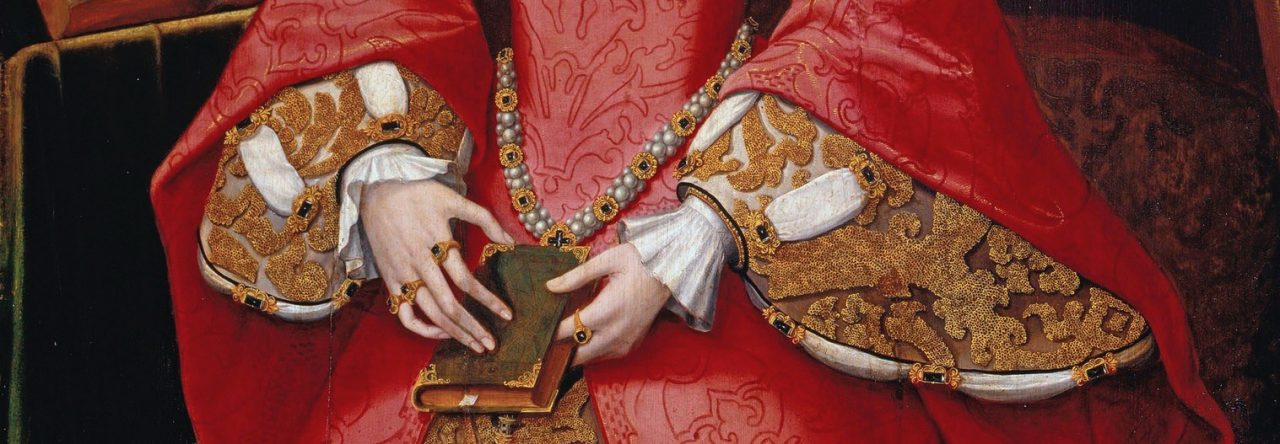
George Sandys (1578–1644) is today best known for his travel writing (especially his Relation of a Journey, 1615) and for his translation of Ovid’s Metamorphoses (1632). In 1636, he first published his Paraphrase upon the Divine Poems, which included versions of the psalms and hymns of the bible. Paraphrases of psalms and other biblical texts were extremely popular in the early modern period. Women themselves engaged in this type of writing and seem to have been eager to read many different versions. Sandys was an Arminianist, and so reading, owning, and especially inscribing this particular version of the psalms with one’s name announces the reader’s own religious beliefs.
This copy of Sandys’s A Paraphrase Upon the Divine Poems (1638) was obviously cherished by its owners, considering the beautiful black Morocco binding.
The inside reveals evidence of male and female ownership: there are pen trials, a short Latin quotation, and a variety of signatures. Among the female signatures is one by An Selby, one by Elizabeth Bath, and one by Anne King, who apparently also copied down the imprint and date for the book. The Latin quotation is from Prosper of Aquitane: “Roma caput mundi / quisquid non possided / armis religione tenett” (Rome capital of the world what it doesn’t possess by arms it holds by religion).

The name Anne King is intriguing: the book contains a dedicatory poem by Henry King (1592–1669), churchman, poet, and acquaintance of Sandys, John Donne, and others. Henry’s sister was the poet Anne King, and even though much about her is uncertain, a possible date of birth is 1621. If this beautifully bound book was a presentation copy, it is possible that it was given to Henry or his sister.
The other names, An Selby and John Howell, can potentially be traced to the Selby family in Kent, owners of the estate of Ightham Mote. This geneaology has an Ann Selby born in 1703 (died 1747), whose grandmother was Elizabeth Howell, daughter to John Howell (who died in 1682). A will of William Selby, Ann’s grandfather, can be found here.
Two bookplates indicate later ownership, by W. H. Corfield and classicist Thomas Gaisford, Dean of Christ Church, whose library was sold at auction in 1880.

Many thanks to Tony Worcester, the owner of this book, for sharing these images and information with us.
Source: Book in private ownership. All images reproduced with permission.




